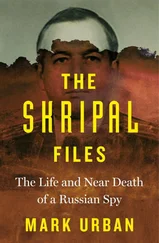These methods of psychological intimidation became more pervasive during Putin’s second 2004–2008 presidential term, as Kremlin paranoia at the prospect of a pro-reform Orange-style revolution grew. In 2009 the then US ambassador John Beyrle wrote a frank cable to the US State Department, one of several thousand written from Russia and leaked by Chelsea Manning. It read: ‘Harassing activity against all embassy personnel has spiked in the past several months to a level not seen in many years. Embassy staff have suffered personally slanderous and falsely prurient attacks in the media. Family members have been the victims of psychologically terrifying assertions that their USG [United States government] employee spouses had met accidental deaths. Home intrusions have become far more common and bold, and activity against our locally engaged staff continues at a record pace. We have no doubt that this activity originates in the FSB.’
This, then, was the FSB. Ironically, the Kremlin’s security services also carried out widespread NSA-style surveillance on the Russian population.
Russia’s nationwide system of remote interception is called SORM. The KGB developed SORM’s technical foundations in the mid-1980s; it has been updated to take account of rapid technological change. SORM-1 captures telephone and mobile phone communications, SORM-2 intercepts internet traffic, and SORM-3 collects data from all communications including content and recordings, and stores them long-term.
The oversight mechanism in the US may have been broken, but in Russia it didn’t exist. Snowden’s documents showed that the NSA compelled phone operators and internet service providers to give information on their customers. Secret FISA court orders made this process legal. The companies could – and would – contest these orders in court, and argued they should be allowed to reveal more detail of what the government agencies were demanding.
In Russia FSB officers also needed a court order to eavesdrop on a target. Once they had it they didn’t need to show the warrant to anybody. Telecoms providers weren’t informed. According to Andrei Soldatov, an expert on Russia’s security services, the FSB doesn’t need to contact the ISP’s staff. Instead, the spy agency calls on the special controller at the FSB HQ that is connected by a protected cable directly to the SORM device installed on the ISP network. This system is copied all over the country: in every Russian town there are protected underground cables, which connect the local FSB department with all providers in the region. The result is that the FSB is able to intercept the email traffic of opposition activists and other ‘enemies’ without oversight.
The wheels of Russian bureaucracy turn slowly. In this case, however, the reasons for delay weren’t official inertia. Putin was carefully weighing up the likely fall-out from granting Snowden asylum. On 24 July, Kucherena said Snowden’s status was still unresolved. In the meantime, Snowden would stay at the Moscow airport.
The lawyer indicated that Snowden was now thinking long-term about a life and possibly a job in Russia: that he intended to stay in the country and to ‘study Russian culture’. He had apparently picked up a few words of Russian: ‘Hi’ and ‘How are you doing?’ Snowden had even tried khatchapuri, Georgian cheese bread.
On 1 August 2013 – 39 days after he flew into Moscow – Snowden strolled out of the airport. Russia had granted him one year’s temporary asylum. The state channel Rossiya 24 showed a photo of Snowden’s departure. He was grinning, carrying a rucksack and a large holdall, and accompanied by a delighted Harrison. Out of the transit zone at last, he exchanged a few words with Kucherena on the pavement. Snowden climbed into a grey unmarked car. The car drove off. Snowden disappeared.
Kucherena showed reporters a copy of Snowden’s new temporary document, which allowed him to cross into Russia. His name, ‘SNOWDEN, EDWARD JOSEPH’, was printed in Cyrillic capitals. There was a fingerprint and fresh passport photo. Security officials said Snowden had left the transit zone at about 3.30pm local time. Russia had apparently not informed the US beforehand.
Kucherena said he wasn’t giving any details about where Snowden was going since he was the ‘most wanted man on the planet’. A statement from WikiLeaks said that he and Harrison were headed to a ‘secure confidential place’. It quoted Snowden as saying: ‘Over the past eight weeks we have seen the Obama administration show no respect for international or domestic law, but in the end the law is winning. I thank the Russian Federation for granting me asylum in accordance with its laws and international obligations.’
US reaction was bitter. The White House announced that Obama was cancelling his bilateral meeting with Putin scheduled to take place during September’s G20 summit, which Russia was hosting in St Petersburg. The president’s spokesperson Jay Carney said the White House was ‘extremely disappointed’. Carney effectively accused Snowden of gifting US secrets to a rival power: ‘Simply the possession of that kind of highly sensitive classified information outside of secure areas is both a huge risk and a violation. As we know he’s been in Russia now for many weeks. There is a huge risk associated with… removing that information from secure areas. You shouldn’t do it, you can’t do it, it’s wrong.’
It was left to the Republican senator John McCain to twist the knife further. McCain, whom Snowden, writing as TheTrueHOOHA, had admired, was a long-standing critic of the White House’s efforts to ‘reset’ relations with Moscow – an accommodationist policy which in McCain’s view merely encouraged Putin’s more obnoxious behaviour. McCain tweeted: ‘Snowden stays in the land of transparency and human rights. Time to hit that reset button again #Russia.’
Where did Snowden go? Red Square and the Kremlin are an ensemble of high ochre walls and golden orthodox towers. At the end of Red Square are the surrealistic onion domes of St Basil’s cathedral.
If you walk up the hill from here past the Metropole Hotel and a statue of Karl Marx you reach a large, forbidding, classically cut building. This is the Lubyanka. Once the headquarters of the KGB, it is now the home of the FSB. Inside, the answer to that question is certainly known. Meanwhile, Russian journalists would speculate Snowden was staying at a presidential sanatorium somewhere near Moscow.
The hacker turned whistleblower had got his asylum. But the longer he stayed out of public view the more it appeared that he was, in some informal way, the FSB’s prisoner.
Stasi headquarters, Normannenstrasse,
East Berlin
October 2013
OBERSTLEUTNANT GRUBITZ: ‘Dreyman’s good, eh?’
WIESLER: ‘I’d have him monitored.’
The Lives of Others , 2004
In the lobby is a statue of a man with a goatee beard. He is ‘Iron’ Felix Dzerzhinsky, the head of Lenin’s secret police. On the wall is a map. It depicts what used to be the German Democratic Republic (GDR), before its dramatic collapse in 1989. The map is divided into districts. Major cities are marked in bold: (East) Berlin – the capital in communist times – Dresden, Magdeburg, Leipzig.
This forbidding building in Berlin-Lichtenberg was once the headquarters of the GDR’s Ministry for State Security, an organisation better known by its abbreviation – the Stasi. The Stasi was modelled on Dzerzhinsky’s Cheka . It was in part a criminal investigation department. But it was also a secret intelligence agency and a political secret police. For nearly four decades – from 1950 until the collapse of the Berlin Wall – the Stasi conducted a sweeping campaign against the GDR’s ‘enemies’. These were, for the most part, internal. The Stasi’s declared goal was ‘to know everything’.
Читать дальше












